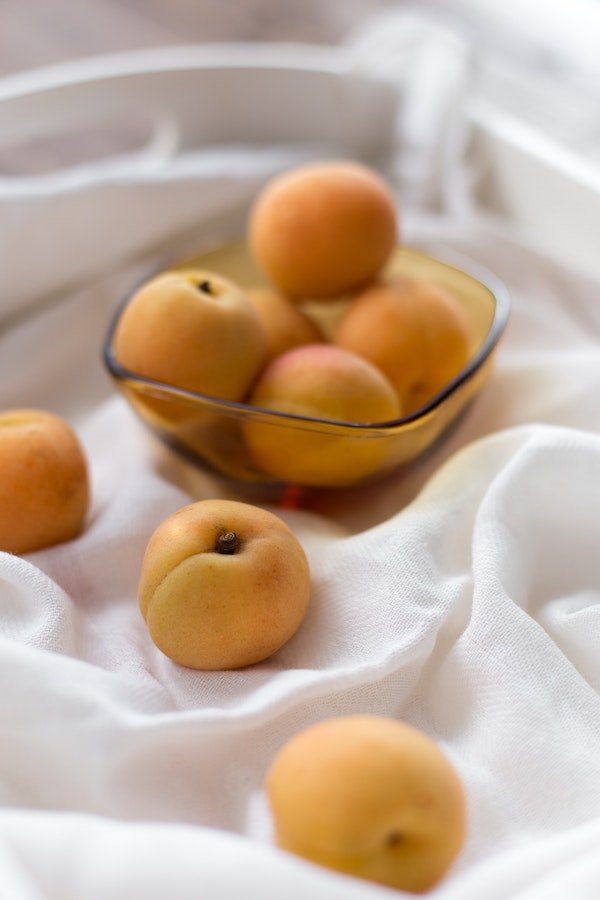
How To Eat Well When You Live In A Food Desert
5 Tips for Combatting Food Inequality
The USDA defines food deserts as neighborhoods that lack healthy food sources. Residents of these areas do not live near supermarkets that carry nutritious foods and often lack access to such retailers due to minimal transportation options and the affordability of such food once finally accessed.
According to the USDA, the census tracts that qualify as food deserts either meet low-income thresholds where the poverty rate is 20 percent or greater, or low-access thresholds where at least 500 people (or 33 percent of the population) live more than one mile from a supermarket. In the case of rural census tracts, it’s 10 miles.
“As of 2019, about 19 million Americans reportedly live in a ‘low income, low access’ area.”
Instead, these residents must shop at nearby convenience stores, gas stations, or other inadequate grocers that don’t offer healthy or affordable food options. Inflated costs can result in food insecurity—in which the shopper cannot afford all the food they (or their families) need for a fulfilling diet—as well as a reliance on highly processed and fast food. As of 2019, about 19 million Americans reportedly live in a “low income, low access” area.
But simply building a supermarket—which would face its own obstacles of costs and zoning—isn’t the only solution. In 2009, the Economic Research Center of the USDA wrote in its Report to Congress that well-intentioned policies would be ineffective if residents didn’t have the time or knowledge to learn how to prepare healthier foods, nor the finances or transportation to access the stores in which the foods are sold.
“Well-intentioned policies would be ineffective if residents [don’t] have the time or knowledge to learn how to prepare healthier foods, nor the finances or transportation to access the stores…”
More importantly, food access is impacted and defined by racial, cultural, and socioeconomic inequalities—so much so that food justice activist Karen Washington prefers the alternative term “food apartheid.”
“We have learned that opening new supermarkets in communities classified as food deserts is not enough,” says Dr. Akua Woolbright, National Nutrition Director of Whole Cities Foundation, a non-profit focused on bringing quality food to cities in need. “There are reasons why major retailers have abandoned or ignored these neighborhoods in the first place, and those largely hinge on income or socioeconomic status. Minority groups are often the ones living in these communities and are hit the hardest.”
“Minority groups are often the ones living in these communities and are hit the hardest.”
In teaching nutrition and culinary classes in urban centers around the country, Woolbright found that many low-income families want to improve both their cooking skills and nutrition knowledge and that the demand for such classes in which basic knife techniques and tips for cooking on a budget are taught is extremely high.
There is no quick fix for food inequality; it’s generated by greater structural deficits. So while the suggestions below are not an exhaustive list of solutions, they can assist someone impacted by inadequate food access.
Buy Canned, Frozen, & Dried (And Buy In Bulk)
The pressure to eat “clean” can often leave shoppers wondering if non-fresh foods are even worth buying. They are. In fact, most frozen foods are frozen at peak ripeness, so you’re getting them when they’re the most nutritious. Additionally, these benefits outweigh whether the foods are organic or not. To tackle the possibility of pesticides, simply rinse your produce with a DIY wash!
“Canned, frozen, and dried foods are often cheaper than their fresh equivalents and have longer shelf lives.”
Canned, frozen, and dried foods are often cheaper than their fresh equivalents and have longer shelf lives. Buying in bulk will afford you the same advantages. Grains, legumes, nuts, and seeds are plant-based proteins that keep for months—much longer than their meat counterparts—meaning fewer trips to the grocery store. (Speaking of, before heading out, review what you have and what you need, your available cabinet and fridge space, and when you’ll be able to make it to the grocery store again. Like anything else, planning in advance can save you time, money, and a headache.)
When relying on non-perishables, however, you should still read the labels. Registered dietician Tiffany Ma, a former Public Health Nutritionist for the New York State Department of Health, says, “Although the nutrient content of these items [is] just as adequate compared to fresh produce, families should try and opt for low-sodium or no-added-sugar in these food items to ensure nutritional integrity.”
Shop Sales & Seasonally
No surprise here, but shopping sale items can stretch your dollar. Using discounts and coupons helps save money and introduces you to new foods you may not have otherwise eaten or learned to cook. Look for deals in weekly circulars and local newspapers or on the grocer’s website and social media accounts.
Woolbright also suggests asking your grocery store personnel if their produce, meat, and bakery departments offer deeper discounts on foods that are still safe to consume but are nearing expiration or deemed imperfect.
“In-season produce will often be cheaper, easier to find, and sold in greater quantities.”
And keep an eye out for in-season produce; it will often be cheaper, easier to find, and sold in greater quantities. For help figuring out what to look for and when, use this Seasonal Food Guide to search by state, month, and produce type. Once you have your produce, here’s how to store and keep them fresh without plastic.
Support Farmers
Farmer’s markets serve as great sources of the aforementioned in-season produce, and they allow you to support your local farmers and vendors directly. Though often non-permanent in that they aren’t housed in structures year-round, farmer’s markets usually “pop up” weekly and offer handgrown produce or preserved goods. To find one near you, the USDA provides a national directory.
“Farmer’s markets [and CSA memberships] allow you to support your local farmers directly.”
CSA memberships benefit both shopper and salesperson in the same way; these are programs in which you buy “shares” of a farm’s harvest in advance and then receive your portion on a weekly, monthly, or another agreed-upon basis throughout the farming season. Some CSA (community-supported agriculture) boxes are delivered; others are picked up; some are for parties of one while others can serve a family, and some programs allow you to preemptively pick your produce while others are a surprise each time. To find a local CSA, use this tool from Local Harvest.
In a similar vein, you can consider joining a food co-op. These are grocery stores that are owned and democratically governed by its members or employees, and that generally seek out local, organic foods while focusing on quality and seasonality. By joining a co-op (in which you buy an ownership stake or share), you not only receive members-only discounts, deals, and refunds but gain a say in what foods and products get stocked, as well as the right to vote on (or join) the organization’s board.
Still, if cost is the greater concern, the USDA’s farmer’s market directory allows you to filter results by the market’s accepted payment types. This is where you can determine whether your nearby market is a member of the Farmers’ Market Nutrition Program (FMNP), which issues coupons to participants of the WIC federal assistance program. The coupons can then be used on eligible fruits and vegetables.
(BTW, if the possibility of delivery piqued your interest, check out these organic produce delivery boxes that come straight to your door, or search for “mobile markets”—converted trucks, buses, and trailers that distribute to disadvantaged communities—serving in your area.)
Grow Your Own
If you can’t get indoor grow lights—which are often used to develop sprouts, herbs, and microgreens at home—your window sill can make a perfect garden patch. Speaking to your property manager can’t hurt either. My boyfriend and I live in a ground-level apartment and we’ve asked our landlord if we can make use of the dirt-filled, plant-deficient space outside our door. We now successfully grow chives out there.
For some vegetables, you won’t even need so much as soil. For example, you can grow celery, cabbage, green onions, fennel, and bok choy in water.
“You can grow celery, cabbage, green onions, fennel, and bok choy in water.”
“Make sure the bottom of the vegetable is intact,” says Shelley Gawith, a certified functional nutritionist. “Fill the jar with water and place the root of the vegetable in the jar. Place it on the windowsill in sunlight and change the water every two to three days.” Gawith adds that eggshells are an “amazing source of minerals” that can be ground down and added to your mini-garden’s soil or even to your smoothies.
Use a Community Garden (Or Fridge)
“Advantages of community gardens include skill-building…and improving social well-being through connection.”
If the idea of green-thumbing alone intimidates you, look for a nearby community garden where produce is exchanged for volunteer work. These gardens are often semi-public spaces in which neighborhood residents share the maintenance and harvest. The CDC reports that advantages of community gardens include engaging in physical activity and skill-building, beautifying neighborhoods and decreasing their violence, and improving social well-being through connection. More than anything, it creates a culture of self-sustainability.
Use this “Find-A-Garden” map from the American Community Garden Association to help locate one near you.
Similarly, community fridges—in which residents can both take and leave fresh produce—have been popping up in public spaces since 2014. According to Food52, they can currently be found on every continent except Antarctica. The food inside these fridges is completely free.
Zenat Begum, who runs Brooklyn’s Playground Coffee Shop, has set up three fridges (often found on Craigslist) on curbsides and corners, and she and her team fill them with food that’s been purchased with donations made to the cafe. They’ve also used Instagram to make calls for produce. She told Food52, “We’re only encouraging people to give fresh produce because that’s what the war is on. We’re using our own sidewalks to do this because that’s where the people are at.”
Look for a community fridge in your neighborhood, and if you decide to launch one yourself, be sure to follow your city’s regulations to ensure that the food is handled with care and its patrons are kept safe.
In addition to these tips, there are a handful of other ways to combat inadequate food access. Food pantries provide directly to those in need in a specified area. Federal assistance programs, like WIC and SNAP, are open to eligible, low-income individuals and families. And if community gardens and co-ops are not currently in your neighborhood, gather your fellow neighbors and reach out to local representatives to advocate for one, or even start a garden yourself.
“Although there are many issues to consider, they are not insurmountable,” says Woolbright. “People are resilient, resourceful, and creative. There are active steps people can take to gain access to more affordable, healthy, and cultural[ly] appropriate foods.”
“Although there are many issues to consider, they are not insurmountable. People are resilient, resourceful, and creative.”
Danielle Cheesman is the Partnerships Lead at The Good Trade. Though born and raised in New Jersey, she’s now based in Los Angeles where you can find her taking pictures, making playlists, or cuddling her pup. Say hi on Instagram!




